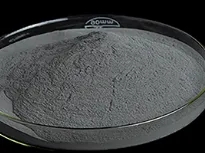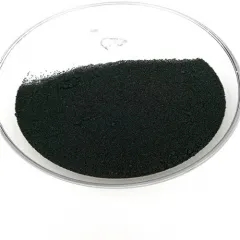Titanium disilicide (TiSi2), as a metal silicide, plays an indispensable role in microelectronics, especially in Huge Scale Assimilation (VLSI) circuits, due to its superb conductivity and low resistivity. It significantly lowers get in touch with resistance and improves current transmission performance, adding to broadband and reduced power usage. As Moore’s Regulation approaches its limitations, the introduction of three-dimensional assimilation innovations and FinFET styles has made the application of titanium disilicide important for maintaining the efficiency of these sophisticated production procedures. In addition, TiSi2 shows great possible in optoelectronic devices such as solar cells and light-emitting diodes (LEDs), as well as in magnetic memory.
Titanium disilicide exists in multiple stages, with C49 and C54 being the most typical. The C49 stage has a hexagonal crystal structure, while the C54 stage displays a tetragonal crystal framework. Because of its reduced resistivity (around 3-6 μΩ · centimeters) and higher thermal stability, the C54 phase is liked in industrial applications. Different methods can be utilized to prepare titanium disilicide, including Physical Vapor Deposition (PVD) and Chemical Vapor Deposition (CVD). The most common approach entails reacting titanium with silicon, transferring titanium films on silicon substrates through sputtering or dissipation, adhered to by Quick Thermal Handling (RTP) to develop TiSi2. This technique allows for exact thickness control and consistent distribution.
(Titanium Disilicide Powder)
In terms of applications, titanium disilicide discovers considerable usage in semiconductor tools, optoelectronics, and magnetic memory. In semiconductor gadgets, it is used for resource drainpipe get in touches with and gate calls; in optoelectronics, TiSi2 stamina the conversion performance of perovskite solar batteries and increases their stability while decreasing flaw thickness in ultraviolet LEDs to boost luminescent efficiency. In magnetic memory, Rotate Transfer Torque Magnetic Random Accessibility Memory (STT-MRAM) based upon titanium disilicide includes non-volatility, high-speed read/write capabilities, and reduced energy consumption, making it an ideal candidate for next-generation high-density data storage space media.
Regardless of the considerable potential of titanium disilicide throughout various high-tech areas, obstacles remain, such as further minimizing resistivity, improving thermal stability, and establishing efficient, economical large manufacturing techniques.Researchers are checking out new material systems, maximizing user interface design, controling microstructure, and establishing environmentally friendly procedures. Efforts consist of:
()
Searching for new generation materials via doping other components or altering substance structure ratios.
Researching ideal matching schemes between TiSi2 and other materials.
Making use of advanced characterization approaches to check out atomic arrangement patterns and their effect on macroscopic residential or commercial properties.
Devoting to environment-friendly, eco-friendly brand-new synthesis paths.
In recap, titanium disilicide attracts attention for its excellent physical and chemical residential properties, playing an irreplaceable duty in semiconductors, optoelectronics, and magnetic memory. Dealing with expanding technical needs and social responsibilities, deepening the understanding of its basic scientific principles and exploring cutting-edge solutions will be key to progressing this area. In the coming years, with the introduction of even more innovation results, titanium disilicide is anticipated to have an even more comprehensive development prospect, continuing to contribute to technical progression.
TRUNNANO is a supplier of Titanium Disilicide with over 12 years of experience in nano-building energy conservation and nanotechnology development. It accepts payment via Credit Card, T/T, West Union and Paypal. Trunnano will ship the goods to customers overseas through FedEx, DHL, by air, or by sea. If you want to know more about Titanium Disilicide, please feel free to contact us and send an inquiry(sales8@nanotrun.com).
All articles and pictures are from the Internet. If there are any copyright issues, please contact us in time to delete.
Inquiry us


